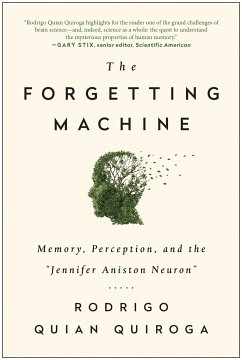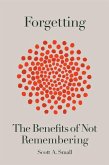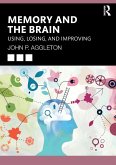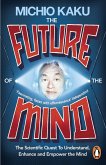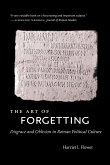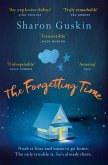25,99 €
inkl. MwSt.
Versandfertig in 2-4 Wochen

13 °P sammeln
- Broschiertes Buch
- Merkliste
- Auf die Merkliste
- Bewerten Bewerten
- Teilen
- Produkt teilen
- Produkterinnerung
- Produkterinnerung
The neuroscientist who discovered the "Jennifer Aniston neuron" offers an exploration of human memory and consciousness.
Andere Kunden interessierten sich auch für
![Forgetting Forgetting]() Scott A. SmallForgetting21,99 €
Scott A. SmallForgetting21,99 €![Memory and the Brain Memory and the Brain]() John P. AggletonMemory and the Brain39,99 €
John P. AggletonMemory and the Brain39,99 €![The Future of the Mind The Future of the Mind]() Michio KakuThe Future of the Mind9,99 €
Michio KakuThe Future of the Mind9,99 €![The Sweetness of Forgetting The Sweetness of Forgetting]() Kristin HarmelThe Sweetness of Forgetting17,99 €
Kristin HarmelThe Sweetness of Forgetting17,99 €![The Art of Forgetting The Art of Forgetting]() Harriet I. FlowerThe Art of Forgetting47,99 €
Harriet I. FlowerThe Art of Forgetting47,99 €![The Forgetting Time The Forgetting Time]() Sharon GuskinThe Forgetting Time17,99 €
Sharon GuskinThe Forgetting Time17,99 €![The Forgetting The Forgetting]() Hannah BeckermanThe Forgetting13,99 €
Hannah BeckermanThe Forgetting13,99 €-
-
-
The neuroscientist who discovered the "Jennifer Aniston neuron" offers an exploration of human memory and consciousness.
Produktdetails
- Produktdetails
- Verlag: BenBella Books
- Seitenzahl: 170
- Erscheinungstermin: 3. Oktober 2017
- Englisch
- Abmessung: 211mm x 141mm x 18mm
- Gewicht: 214g
- ISBN-13: 9781944648541
- ISBN-10: 1944648542
- Artikelnr.: 48817474
- Herstellerkennzeichnung
- Libri GmbH
- Europaallee 1
- 36244 Bad Hersfeld
- gpsr@libri.de
- Verlag: BenBella Books
- Seitenzahl: 170
- Erscheinungstermin: 3. Oktober 2017
- Englisch
- Abmessung: 211mm x 141mm x 18mm
- Gewicht: 214g
- ISBN-13: 9781944648541
- ISBN-10: 1944648542
- Artikelnr.: 48817474
- Herstellerkennzeichnung
- Libri GmbH
- Europaallee 1
- 36244 Bad Hersfeld
- gpsr@libri.de
Rodrigo Quian Quiroga holds a Research Chair at the University of Leicester, UK. He is the director of the Centre for Systems Neuroscience and the Head of Bioengineering at the University of Leicester. He graduated in Physics at the University of Buenos Aires, Argentina and obtained his PhD in Applied Mathematics at the University of Luebeck, Germany. Before joining the University of Leicester in 2004, he was a post-doctoral fellow at the Research Center Juelich, Germany, a Sloan fellow at the California Institute of Technology, USA and had short stays at RIKEN, Japan and the University of Nijmegen, The Netherlands. He has held visiting positions at the Leibniz Institute for Neurobiology in Magdeburg, the International School for Advanced Studies (SISSA) in Trieste, Italy, the University of California Los Angeles, the California Institute of Technology, the University of Buenos Aires, and CONICET. He obtained a young investigator award by the American Epilepsy Society, in 2010 a Royal Society Wolfson Research Merit Award and in 2014 he was selected as one of the 10 UK RISE Leaders in Science and Engineering. His main research interest is on the study of the principles of visual perception and memory. He discovered what has been named ""Concept cells"" or ""Jennifer Aniston neurons"", neurons in the human brain that play a key role in memory formation, a finding that was selected as one of the top 100 scientific stories of 2005 by Discover Magazine. His work has been published in about 100 research articles and has received world-wide media attention, including articles in The New York Times, The Washington Post, Scientific American, New Scientist, The Independent, and others. He is also the author of Borges and Memory, linking the thoughts of Argentinean writer Jorge Luis Borges with memory research in Neuroscience.
Chapter 1. How Do We Store Memories?
Chapter 2. How Much Do We See?
Chapter 3. Does the Eye Really See?
Chapter 4. How Much Do We Remember?
Chapter 5. Can We Remember More?
Chapter 6. Could We Become More Intelligent?
Chapter 7. Types of Memory
Chapter 8. How Does the Brain Represent Concepts?
Chapter 9. Can Androids Feel?
Notes
Index
Acknowledgments
About the Author
Chapter 2. How Much Do We See?
Chapter 3. Does the Eye Really See?
Chapter 4. How Much Do We Remember?
Chapter 5. Can We Remember More?
Chapter 6. Could We Become More Intelligent?
Chapter 7. Types of Memory
Chapter 8. How Does the Brain Represent Concepts?
Chapter 9. Can Androids Feel?
Notes
Index
Acknowledgments
About the Author
Chapter 1. How Do We Store Memories?
Chapter 2. How Much Do We See?
Chapter 3. Does the Eye Really See?
Chapter 4. How Much Do We Remember?
Chapter 5. Can We Remember More?
Chapter 6. Could We Become More Intelligent?
Chapter 7. Types of Memory
Chapter 8. How Does the Brain Represent Concepts?
Chapter 9. Can Androids Feel?
Notes
Index
Acknowledgments
About the Author
Chapter 2. How Much Do We See?
Chapter 3. Does the Eye Really See?
Chapter 4. How Much Do We Remember?
Chapter 5. Can We Remember More?
Chapter 6. Could We Become More Intelligent?
Chapter 7. Types of Memory
Chapter 8. How Does the Brain Represent Concepts?
Chapter 9. Can Androids Feel?
Notes
Index
Acknowledgments
About the Author
